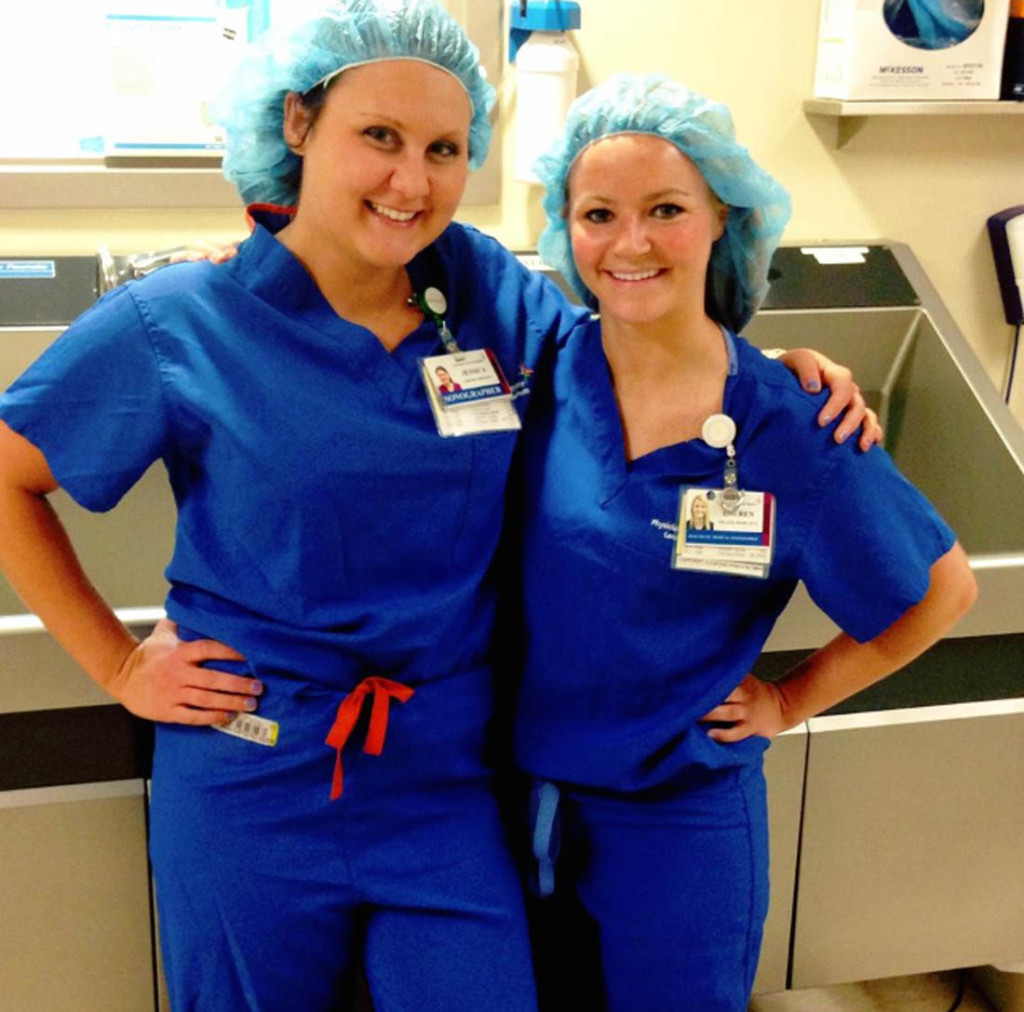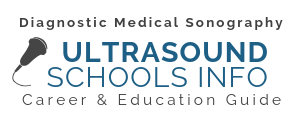Getting Certified in Diagnostic Medical Sonography
A certification is a license or credential that you earn to show that you have specific knowledge or skills. The ARDMS ® (American Registry for Diagnostic Medical Sonography) is one of the most recognized sonography license organizations across the United States and the world. Obtaining a registry in one or more of the disciplines offered by the ARDMS is the most important thing you can do to secure employment once you graduate from a sonography prorgram.
The ARDMS offers ultrasound certificates in Abdomen, Breast, Echocardiography, Neurosonology, OB/GYN, Vascular Technology, Musculoskeletal Sonography. The Commission on Accreditation of Allied Health Education Programs (CAAHEP) accredits thousands of health science education programs in the US. If you graduate from a school accredited by the CAAHEP, you’re automatically qualified to sit for the ARDMS exam. Both the ARDMS and CAAHEP will be explained in further detail below.

Additional Articles Related to Sonography Certification
Ultrasound Certifications
The ARDMS is not the only organization that offers certification. Diagnostic medical sonographers can also apply for Sonography Certification through the ARRT (American Registry for Radiologic Technologists). Completing an ultrasound program from an accredited school (recognized by the CHEA or USDE) within the last five years makes you eligible to sit for the ARRT certification exam. Determining which certification is best for you can depend on factors such as your school’s accreditation status, your specialty within the field, and your career goals.

“I would recommend taking your certification boards soon after graduation. The information is fresh in your mind, and you will become more marketable for jobs if you have those under your belt.
Get yourself out there in the job field. Even if you don’t get the perfect job to start, keep an open mind and be receptive to any opportunities that arise.” – Jessica Carlino, RDMS, RVT
To acquire and maintain this ultrasound license, candidates must also abide by the ARRT’s Rules of Ethics, which strives to promote and maintain patient welfare. Additionally, an ultrasound practice (i.e. a medical center or hospital) can become accredited through the American Institute of Ultrasound in Medicine (AIUM).
Examples of other organizations that administer ultrasound licenses include:
- Cardiovascular Credentialing International (CCI) offers certifications in cardiac, vascular and phlebology ultrasound.
- The Joint Commission on Allied Health Personnel in Ophthalmology (JCAHPO) offers ophthalmic ultrasound certifications (sonography related to the eyes).
- The Ultrasound Guidelines Council (UGC) grants ultrasound certifications to technicians and their practices that perform ultrasounds on beef cattle.
Important Things to Know about the ARDMS
How do I earn my ARDMS Certification?
ARDMS certification is achieved by passing the Sonography, Principles and Instrumentation (SPI) Exam, and is something that most graduates will pursue once they earn their ultrasound technician degree. You will also need to pass a specialty exam related to your specific field of study in order to receive a certificate.
Is ARDMS certification required?
Most states don’t require diagnostic medical sonographers to hold particular credentials, with the exception of New Hampshire, New Mexico, North Dakota and Oregon.
More recently, legislation to mandate the credentialing of ultrasound techs are being pursued by some states, while others are considering it. Additionally, many employers prefer or require serious job candidates to have an ultrasound certification.
There are additional ultrasound certification processes you can pursue to demonstrate the full range of your expertise and specialization that will allow you stand out from other job applicants.
Sonography certification and training program information by state. Select your state.
Explore ultrasound training and program information by degree level
Associate Degree in Sonography
Bachelors Degree in Sonography
Ultrasound Certificate Programs
Masters Degree in Sonography & Health Science
CAAHEP – Commission on Accreditation of Allied Health Education Programs
The CAAHEP’s certification is recognized by the Council for Higher Education Accreditation (CHEA). This is key because to be eligible for the CAAHEP or other ultrasound certifications such as the ARDMS, part of the typical criteria is completion of an educational program recognized by the CHEA (or the USDOE or CMA).
Additionally, you’re automatically qualified to take the ARDMS exam if you graduate from a school accredited by the CAAHEP.
The Commission on Accreditation of Allied Health Education Programs is responsible for the accreditation of over 2,100 postsecondary education programs across North America, 23 of which focus on health or health science.
Member organizations
The CAAHEP consists of member organizations that are knowledgeable in each health science field and are able to provide valuable input related to accredited educational programs.

Among the member organizations are several related to the field of ultrasound. These include:
- The American Institute of Ultrasound in Medicine (AIUM)
- The American Society of Echocardiography (ASECHO)
- The Committee on Accreditation for Advanced Cardiovascular Sonography
- The Joint Review Committee on Education in Diagnostic Medical Sonography (JRCDMS)
- The Society of Diagnostic Medical Sonography (SDMS)
- The Society for Vascular Ultrasound (SVU)
In short, when selecting an ultrasound degree or certificate program, ensure it is recognized by the CHEA, USDOE or CMA. If it is accredited through the Commission on Accreditation of Allied Health Education Programs (CAAHEP), you will be meeting this particular prerequisite for the ultrasound license process.
Keep Exploring! Find Our Most Recent Articles & Interviews Below.
- Ultrasound Physics: How To Master The Challenging Concepts
- Tips For Avoiding Musculoskeletal Injuries in Sonographers
- Surviving and Thriving in Sonography School
- Interview with Sonographer Carlos Reveles, RDMS
- Tips on Passing the SPI
- How To Manage The Stress of Ultrasound School
- Best Workplaces to Launch Your Sonography Career
- The Makings of The Skilled Sonographer
- Effective Communication is Key in New Sonographer Orientation
- Transitioning from Ultrasound School to the Workplace
Article By: Ultrasound Schools Info Staff. At Ultrasoundschoolsinfo.com, our goal is to provide a reliable and accurate resource for students and sonography professionals alike. Information is reviewed and updated on an ongoing basis by our editorial staff. Please contact us to submit feedback and suggestions.

 By
By